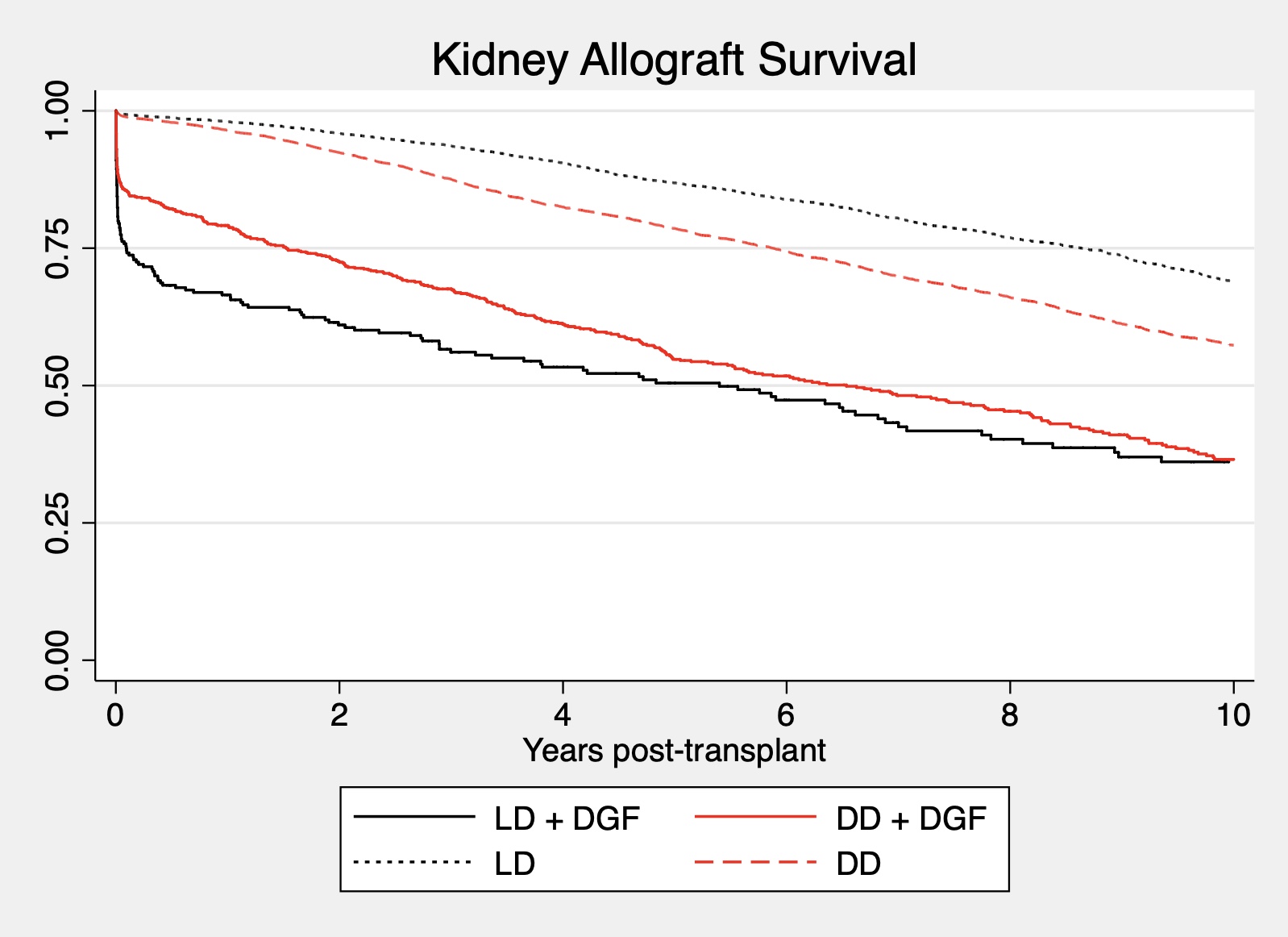Delayed Graft Function Predicts High Risk of Allograft Loss Following Living and Deceased Donor Pediatric Kidney Transplantation
1UT Southwestern, Dallas, TX, 2UC San Diego, San Diego, CA
Meeting: 2020 American Transplant Congress
Abstract number: C-073
Keywords: Donation, Outcome, Renal injury, Risk factors
Session Information
Session Name: Poster Session C: Kidney Living Donor: Long Term Outcomes
Session Type: Poster Session
Date: Saturday, May 30, 2020
Session Time: 3:15pm-4:00pm
 Presentation Time: 3:30pm-4:00pm
Presentation Time: 3:30pm-4:00pm
Location: Virtual
*Purpose: Pediatric kidney recipients receive high quality living and deceased donor kidneys for transplantation, and as such, these kidneys have a low rate of delayed graft function (DGF). We aimed to study factors associated with DGF in pediatric transplantation and to determine the effect of DGF on pediatric allograft outcomes.
*Methods: The UNOS database was used to identify all pediatric kidney patients (<18 years) transplanted between 2000—2019. Both Living and deceased donors were included for analysis. DGF was defined as the need for dialysis within the first week after transplant. Donor and recipient demographic data were examined, as were survival and outcomes. A p-value of <0.05 was considered to be significant.
*Results: There were 15,642 pediatric kidney transplants performed during the study period, 6,221 (39.8%) were from living donors (LD) and 9,421 (60.2%) were from deceased donors (DD). Overall, the DGF complicated 6.9% of pediatric transplants, LD recipients experienced significantly lower DGF rates than DD recipients (4.2% v 8.7%). The LD group was older (37 v 21 years) and had shorter cold ischemia time (2.3 v 14 hours) when compared to DD group, however DGF was not associated with significantly older donor age or prolonged cold ischemia times. Recipients of LD kidneys were younger than DD recipients (10 v 11 years). DGF was seen most frequently in recipients of LD kidneys under 15Kg (24% v 10%). Recipients of LD and DD kidneys complicated by DGF had significantly worse allograft survival when compared to those who did not (Figure 1). LD with DGF had the worst allograft survival. Length of stay was also longer with DGF (23.5 v 10.1 days for LD; 21 v. 15 days for DD). Patients with DGF also had higher rates of rejection 12 months post-transplant (26% v 12% for LD; 25% v 16% DD).
*Conclusions: DGF following pediatric kidney transplant results is greatly diminished allograft survival for recipients of deceased and living donor kidneys. Living donors show the greatest decrease in 1-year graft survival if complicated by DGF. This finding warrants further investigation to understand the underlying mechanism.
To cite this abstract in AMA style:
MacConmara M, Gattineni J, Desai D, Parekh J, Vagefi P, Hwang CS. Delayed Graft Function Predicts High Risk of Allograft Loss Following Living and Deceased Donor Pediatric Kidney Transplantation [abstract]. Am J Transplant. 2020; 20 (suppl 3). https://atcmeetingabstracts.com/abstract/delayed-graft-function-predicts-high-risk-of-allograft-loss-following-living-and-deceased-donor-pediatric-kidney-transplantation/. Accessed December 29, 2025.« Back to 2020 American Transplant Congress

